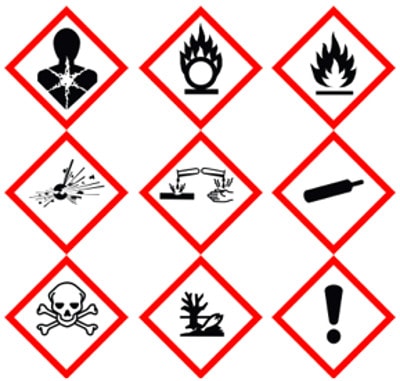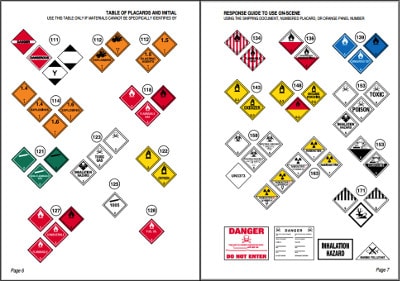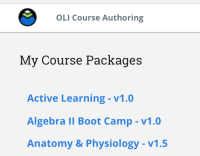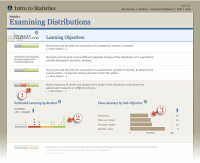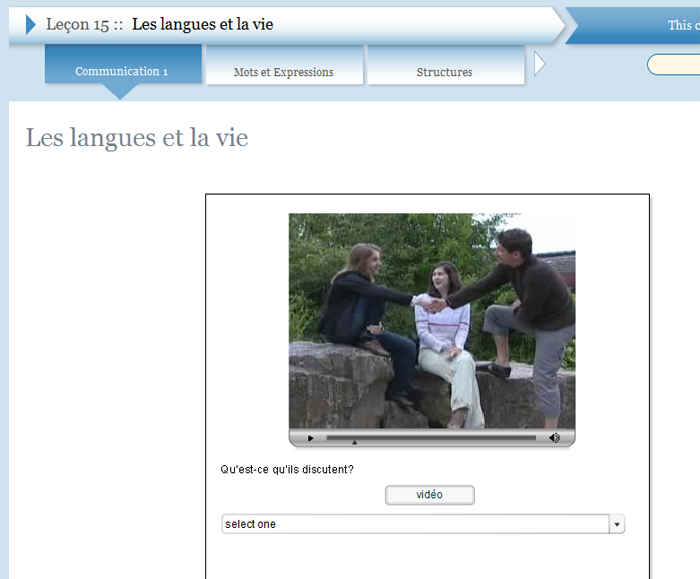Learn about environmental technology in the contexts of HazMat, Safety, and Water Quality. Environmental students have the opportunity to earn nationally recognized federal certificates from the Environmental Protection Agency (EPA) and the Occupational Safety and Health Administration (OSHA) and are prepared for positions focusing on environmental issues, laboratory and field tests, and workplace safety.
Environmental Technology — NSC STEM Pathways
$10
- Description
- What students will learn
- Learning objectives by module
- Course assessments, activities, and outline
- Other course details
- System requirements
- Included instructor tools
Description
The National STEM Consortium’s (NSC) Environmental Technology Pathway is a one-year, 30-credit hybrid course (mixture of online and face-to-face) consisting of 12 mini-courses. The entire Pathway consists of a set of materials a school or institution can customize for their program’s or students’ needs. Each mini-course includes:
- A downloadable Teaching Toolkit with the following documents:
- A course introduction (READ ME) that explains the course, including course structure, learning outcomes, prerequisites, and suggested texts.
- A suggested syllabus that you can customize to your college, department, course, and individual preferences.
- Suggested lesson plans with learning outcomes and assessments, lesson outline, teaching tips, and instructional resources.
- Supplemental materials as labeled.
- OLI online modules to help prepare students for face-to-face instruction, by providing mini-lessons and interactive drills that address common sticking points
NOT INCLUDED are the recommended textbooks. See the README First document in the Teaching Toolkit for each mini-course for a list of recommended texts.
Created through a collaboration with the OPEN Platform+ program, the National STEM Consortium academic certificate in Environmental Technology is built on a 30-semester-credit model and includes two tracks: (1) HazMat, Safety, and Health, and (2) Water Quality. Graduates have the opportunity to earn nationally recognized federal certificates from the Environmental Protection Agency (EPA) and the Occupational Safety and Health Administration (OSHA) and are prepared for positions focusing on environmental issues, laboratory and field tests, and workplace safety.
NSC STEM Pathways
STEM Pathways are five certificate programs developed by the National STEM Consortium (NSC). NSC is a collaborative of ten colleges in nine states, funded by a U.S. Department of Labor grant to develop one-year, 30-credit certificate programs in five Science, Technology, Engineering, and Mathematics (STEM) fields: Composites Technology, Cyber Technology, Electric Vehicle Technology, Environmental Technology, and Mechatronics Technology. In collaboration with the OPENPlatform+ program, these have been implemented and made available on the OLI platform, with learning activities targeting specific areas of challenge, resources to support instructors and implementation guides for administrators.
The STEM Pathways use an innovative two-part STEM Bridge program to improve completion and success rates of students. This program embeds contextualized refresher instruction in mathematics, communication, and professionalism to eliminate traditional remedial courses and prepare students for success in demanding technical courses. The NSC STEM Readiness course enables students who are not fully college-ready in math to enroll and succeed in the technical curriculum, thus broadening the pool of potential students and opening STEM careers to a greater number of workers. The second element of the STEM Bridge is designed as a FAST TRACK program to support learners who require more intensive, up-front development of the basic skills required for access to the technically demanding educational pathways into STEM occupation. The STEM Foundations course provides elements of this FAST TRACK approach.
The NSC academic model is built on four research-based strategies that, when combined, yielded an average 69% on-time completion rate across its students nationwide.
First, NSC instruction is outcomes-driven, delivering learning outcomes mapped to industry standards. NSC member colleges formed regional advisory boards to respond to industry needs and employer requests. These materials include implementation guides with examples and recommendations from colleges whose regional economies support a diversity of industries, such as healthcare, construction, and the military.
Second, NSC programs are one-year, 30-semester-credit academic certificates. Certificates are a highly effective tool for workforce development, and are most effective when they are long enough to be rigorous yet short enough to be achievable. The certificate-level credential is a missing, but critical, on-ramp to career pathways for adult learners who often lack access to and awareness of high-demand careers in STEM fields. Graduates receive the greatest return on investment from certificates of one year or longer with a load of thirty-six semester credits or fewer.
Third, NSC programs use a built-for-completion structure including a program navigator, cohort structure, block scheduling, compressed timeline, enhanced student support services, and employer partnerships. Research has shown that it is the combination of strategies, rather than any single strategy, that boosts student success. Specifically, a growing body of evidence argues for “strategy intervention at a more comprehensive and integrated level that aims at simultaneous change focusing around whole program design and delivery – improving the coherency of instruction and educationally relevant services that students need as they move through their program of study.”
Last, NSC programs embed contextualized refresher instruction in mathematics, communication, and professionalism to eliminate traditional remedial courses and prepare students for success in demanding technical courses. The NSC STEM Readiness course enables students who are not fully college-ready in math to enroll and succeed in the technical curriculum, thus broadening the pool of potential students and opening STEM careers to a greater number of workers.
Colleges aiming for systemic change in their student completion and achievement levels are strongly advised to adopt the entire NSC academic model. However, NSC programs are flexible by design, allowing institutions to customize implementation to their regional economy and local conditions. For example, a college might choose to pursue implementation in stages.
STEM Pathway Programs
- Composites Technology
- Cyber Technology
- Electric Vehicle Technology
- Environmental Technology
- Mechatronics Technology
STEM Bridge Courses
What students will learn
The NSC Environmental Technology certificate program has learning outcomes in the categories of Water Quality, Air Quality, Ecosystem, Instruments, Data, Hazardous Materials, Worker Protection, and Government Regulations. These outcomes are broad themes of the program, achieved in one or more of its courses:
- Demonstrate knowledge of the principles of managing and remediation of water pollution.
- Demonstrate knowledge of the principles of managing and remediation of air pollution.
- Demonstrate basic knowledge of the principles of the ecosystem.
- Operate and calibrate laboratory and field instruments used in quantitative and qualitative analysis of pollutants.
- Sample, analyze and calculate data related to air and water pollutants.
- Demonstrate an understanding of health and safety protocols for handling hazardous materials.
- Identify the types of hazards that exist in work environments and discuss how workers should be protected.
- Demonstrate knowledge of federal, state, and local regulations.
Learning objectives by module
Unit 1: Environmental Technology
Module 1: Introduction to Environmental Science
- Apply critical thinking skills to analyzing the scientific process.
- Identify different careers within the environmental sciences.
- Look up common acronyms used in environmental sciences.
- Use reading comprehension and critical thinking skills to analyze the 2014 Elk River, West Virginia chemical spill
Module 2: Environmental Compliance
- Apply critical thinking skills to analyzing the scientific process.
- Demonstrate knowledge of being able to recognize the potential hazards (both physical and chemical) that can be found in the workplace or at sites containing hazardous materials.
- Describe the connection between standards, enforcement, industry, and the need for third party objective review of chemical-related disasters in the workplace. To describe the connection between standards, enforcement, industry, and the need for third party objective review of chemical-related disasters in the workplace.
- Identify different careers within the environmental sciences.
- Identify the roles and the responsibilities of the Resource Conservation and Recovery Act.
- Identify the varied responsibilities of federal agencies with jurisdiction over the environmental sector.
- Look up common acronyms used in environmental sciences.
- Use the Emergency Response Guide (ERG) Green Pages to decide isolation and protective action zones.
- Use the Emergency Response Guide (ERG) orange pages to determine material hazards.
- Use the Emergency Response Guide (ERG) white pages to look up road trailers.
- Use the Emergency Response Guide (ERG) yellow pages to look up hazardous materials by ID number.
- Use the Emergency Response Guide (ERG) yellow pages to look up hazardous materials by name
Module 3: Environmental Sampling Procedures
- Apply critical thinking skills to analyzing the scientific process.
- Determine correct analysis techniques for air, water, and soil.
- Differentiate positive and negative controls in chemical analyses.
- Explain the importance of having properly calibrated water quality instruments.
- Identify different careers within the environmental sciences.
- Interpret experimental variables and graphs.
- Look up common acronyms used in environmental sciences.
Module 4: Regulatory
- Apply basic understanding of the information contained in the NIOSH pocket guide to situations involving hazardous substances.
- Apply critical thinking skills to analyzing the scientific process.
- Demonstrate knowledge of being able to recognize the potential hazards (both physical and chemical) that can be found in the workplace or at sites containing hazardous materials.
- Describe the connection between standards, enforcement, industry, and the need for third party objective review of chemical-related disasters in the workplace. To describe the connection between standards, enforcement, industry, and the need for third party objective review of chemical-related disasters in the workplace.
- Identify different careers within the environmental sciences.
- Identify the roles and the responsibilities of the Resource Conservation and Recovery Act.
- Identify the varied responsibilities of federal agencies with jurisdiction over the environmental sector.
- Look up common acronyms used in environmental sciences.
- Use the Emergency Response Guide (ERG) Green Pages to decide isolation and protective action zones.
- Use the Emergency Response Guide (ERG) orange pages to determine material hazards.
- Use the Emergency Response Guide (ERG) white pages to look up road trailers.
- Use the Emergency Response Guide (ERG) yellow pages to look up hazardous materials by ID number.
- Use the Emergency Response Guide (ERG) yellow pages to look up hazardous materials by name
Module 5: Industrial Hygiene and Lab
- Analyze the Globally Harmonized System and identify its key elements.
- Apply basic understanding of the information contained in the NIOSH pocket guide to situations involving hazardous substances.
- Apply critical thinking skills to analyzing the scientific process.
- Describe the connection between standards, enforcement, industry, and the need for third party objective review of chemical-related disasters in the workplace. To describe the connection between standards, enforcement, industry, and the need for third party objective review of chemical-related disasters in the workplace.
- Evaluate a Safety Data Sheet (SDS) to determine appropriate labeling for the chemical, PPE for employee use, and specific warnings employees need to be aware of regarding use of the chemical.
- Identify different careers within the environmental sciences.
- Identify the roles and the responsibilities of the Resource Conservation and Recovery Act.
- Identify the varied responsibilities of federal agencies with jurisdiction over the environmental sector.
- Interpret hazardous chemical labels according to the Global Harmonization System.
- Look up common acronyms used in environmental sciences.
Module 6: Hazardous Materials and Lab
- Apply critical thinking skills to analyzing the scientific process.
- Demonstrate an understanding of health and safety protocols for handling hazardous materials.
- Demonstrate an understanding the potential for the intentional misuse of chemicals in the community.
- Describe the connection between standards, enforcement, industry, and the need for third party objective review of chemical-related disasters in the workplace. To describe the connection between standards, enforcement, industry, and the need for third party objective review of chemical-related disasters in the workplace.
- Differentiate between certain classes of chemicals and determine if various chemicals are compatible.
- Identify different careers within the environmental sciences.
- Identify the roles and the responsibilities of the Resource Conservation and Recovery Act.
- Identify the types of hazards that exist in work environments and discuss how workers should be protected
- Identify the varied responsibilities of federal agencies with jurisdiction over the environmental sector.
- Look up common acronyms used in environmental sciences.
- Use reading comprehension and critical thinking skills to analyze the 2014 Elk River, West Virginia chemical spill
Module 7: Hazardous Materials Technician
- Apply critical thinking skills to analyzing the scientific process.
- Demonstrate an understanding of health and safety protocols for handling hazardous materials.
- Demonstrate an understanding the potential for the intentional misuse of chemicals in the community.
- Describe the connection between standards, enforcement, industry, and the need for third party objective review of chemical-related disasters in the workplace. To describe the connection between standards, enforcement, industry, and the need for third party objective review of chemical-related disasters in the workplace.
- Differentiate between certain classes of chemicals and determine if various chemicals are compatible.
- Identify different careers within the environmental sciences.
- Identify the roles and the responsibilities of the Resource Conservation and Recovery Act.
- Identify the types of hazards that exist in work environments and discuss how workers should be protected
- Identify the varied responsibilities of federal agencies with jurisdiction over the environmental sector.
- Look up common acronyms used in environmental sciences.
- Use reading comprehension and critical thinking skills to analyze the 2014 Elk River, West Virginia chemical spill
Module 8: Hazardous Materials Risk Analysis
- Apply critical thinking skills to analyzing the scientific process.
- Identify different careers within the environmental sciences.
- Look up common acronyms used in environmental sciences.
Module 9: Introduction to OSHA
- Apply critical thinking skills to analyzing the scientific process.
- Describe the connection between standards, enforcement, industry, and the need for third party objective review of chemical-related disasters in the workplace. To describe the connection between standards, enforcement, industry, and the need for third party objective review of chemical-related disasters in the workplace.
- Identify different careers within the environmental sciences.
- Identify the roles and the responsibilities of the Resource Conservation and Recovery Act.
- Identify the varied responsibilities of federal agencies with jurisdiction over the environmental sector.
- Look up common acronyms used in environmental sciences.
Module 10: Introduction to Water Resources
- Apply critical thinking skills to analyzing the scientific process.
- Determine correct analysis techniques for air, water, and soil.
- Identify different careers within the environmental sciences.
- Look up common acronyms used in environmental sciences.
- Use reading comprehension and critical thinking skills to analyze the 2014 Elk River, West Virginia chemical spill
Module 11: Chemistry and Biology of Natural Waters
- Apply critical thinking skills to analyzing the scientific process.
- Identify different careers within the environmental sciences.
- Look up common acronyms used in environmental sciences.
- Use reading comprehension and critical thinking skills to analyze the 2014 Elk River, West Virginia chemical spill
Module 12: Field Work
- Apply critical thinking skills to analyzing the scientific process.
- Determine correct analysis techniques for air, water, and soil.
- Differentiate positive and negative controls in chemical analyses.
- Explain the importance of having properly calibrated water quality instruments.
- Identify different careers within the environmental sciences.
- Interpret experimental variables and graphs.
- Look up common acronyms used in environmental sciences.
- Use reading comprehension and critical thinking skills to analyze the 2014 Elk River, West Virginia chemical spill
Course assessments, activities, and outline
UNIT 1: Environmental Technology
Module 1: Introduction to Environmental Science
Module 2: Environmental Compliance
Module 3: Environmental Sampling Procedures
Module 4: Regulatory
Module 5: Industrial Hygiene and Lab
Module 6: Hazardous Materials and Lab
Module 7: Hazardous Materials Technician
Module 8: Hazardous Materials Risk Analysis
Module 9: Introduction to OSHA
Module 10: Introduction to Water Resources
Module 11: Chemistry and Biology of Natural Waters
Module 12: Field Work
Other course details
System requirements
OLI system requirements, regardless of course:
- internet access
- an operating system that supports the latest browser update
- the latest browser update (Chrome recommended; Firefox, Safari supported; Edge and Internet Explorer are supported but not recommended)
- pop-ups enabled
- cookies enabled
Some courses include exercises with exceptions to these requirements, such as technology that cannot be used on mobile devices.
This course’s system requirements:
- none listed (subject to change)
Included instructor tools
Instructors who teach with OLI courses benefit from a suite of free tools, technologies, and pedagogical approaches. Together they equip teachers with insights into real-time student learning states; they provide more effective instruction in less time; and they’ve been proven to boost student success.

